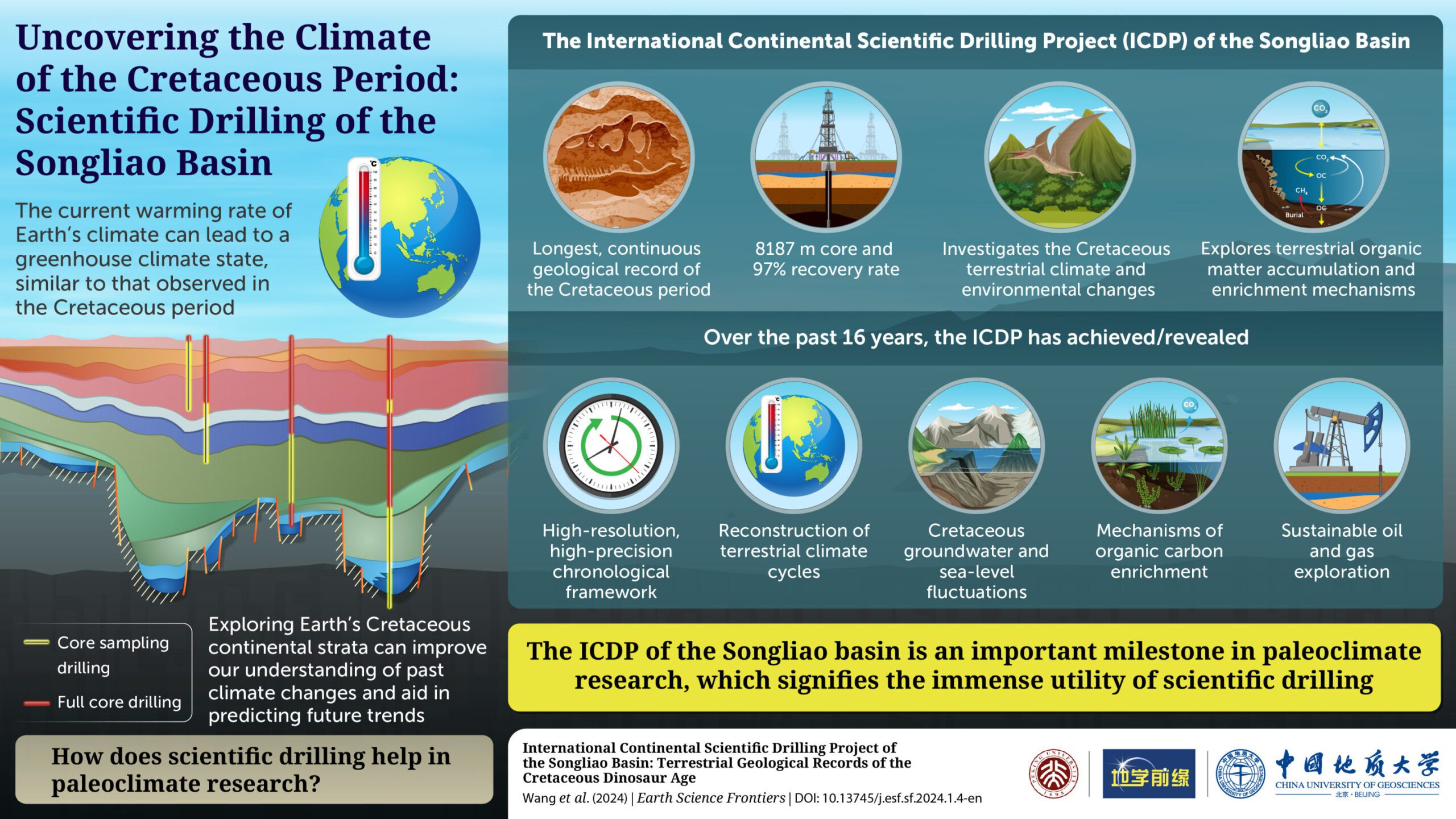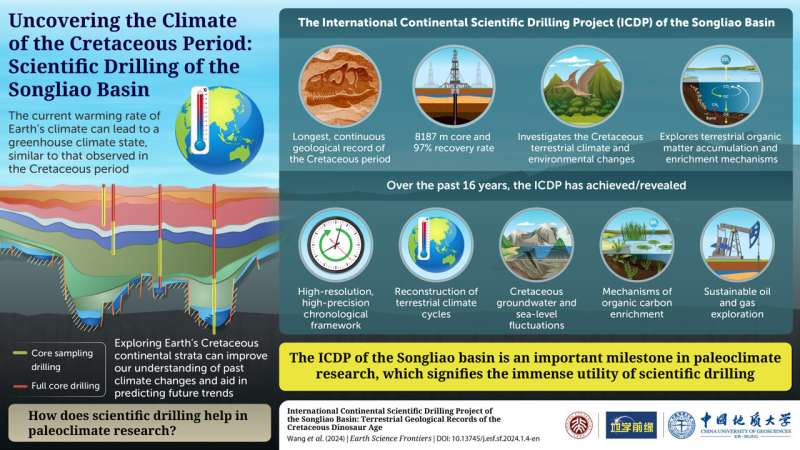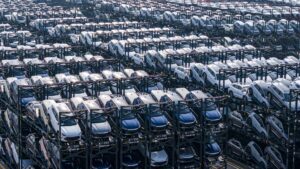

Since the dawn of the Industrial Revolution, the increase in carbon dioxide emissions has consistently warmed the Earth’s climate. At the current warming rate, our planet might potentially be on track toward witnessing a greenhouse climate state with no ice on polar caps.
To predict how our current climate will change in the future, scientists have turned to investigating the past. Exploring the Earth’s interior can uncover crucial information, and “scientific drilling” has emerged as a groundbreaking initiative in this pursuit. Scientific drilling is a way to probe the Earth’s sediments, crust, and upper mantle from different historical periods.
To realize the full potential of this technique, in 1996, Germany, the U.S., and China jointly launched the International Continental Scientific Drilling Project (ICDP). Since its inception, the project has undertaken nearly a hundred drilling projects. Among these, the scientific drilling of the Songliao Basin stands out as an important endeavor.
This project, led by Professor Wang Chengshan from China University of Geosciences, who is a chief scientist of ICDP and Editor-in-chief at Earth Science Frontiers, aims to explore the Cretaceous period, which was characterized by a greenhouse climate state, supporting the existence of dinosaurs.
The details of the ICDP project and its findings were published in Earth Science Frontiers.
The Songliao Basin is the world’s longest, longest-surviving, super-large lake basin, making it ideal for studying the Cretaceous period. “It is crucial to study the past to predict the future,” explains Prof. Chengshan. “Understanding the past climatic and environmental changes that took place in our planet can help us better understand future global warming trends and the ICDP of the Songliao Basin has been immensely successful in this regard.”
Over the past 16 years, the ICDP of Songliao Basin has made a series of significant contributions. Notably, it boasts of the world’s longest geological record of the Cretaceous series, obtaining an 8,187-meter-long core with a 97% recovery rate. The project has led to the establishment of a high-resolution and high-precision chronological framework of the Cretaceous period and has also revealed the patterns of its terrestrial climate evolution.
Moreover, it has also revealed the mechanisms of Cretaceous sea-level fluctuations and confirmed the presence of sea-water incursion events in the Songliao Basin, which has been a subject of controversy in the past. These achievements provide important insights for predicting future climate trends and promoting sustainable exploration of oil and gas in the region.
“We have investigated over 50 million years of Cretaceous climate evolution and shown that scientific drilling is integral in obtaining authentic and high-quality geological records for paleoclimate research,” says Prof. Chengshan, highlighting the importance of the project.
Overall, this study marks a significant milestone in geological exploration which proves that scientific drilling will continue to unearth new information for understanding the past and therefore predicting the future.
More information:
International Continental Scientific Drilling Project of the Songliao Basin: Terrestrial Geological Records of the Cretaceous Dinosaur Age, Earth Science Frontiers (2024). DOI: 10.13745/j.esf.sf.2024.1.4-en
Provided by
Cactus Communications
Citation:
Study highlights achievements of the scientific drilling of Songliao Basin (2024, March 18)
retrieved 18 March 2024
from https://phys.org/news/2024-03-highlights-scientific-drilling-songliao-basin.html
This document is subject to copyright. Apart from any fair dealing for the purpose of private study or research, no
part may be reproduced without the written permission. The content is provided for information purposes only.

